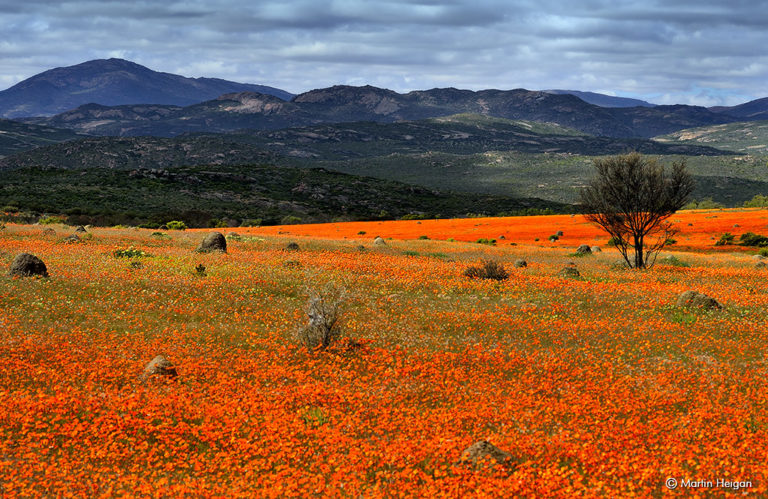Every year, the unique flora of the Namaqualand comes alive after the winter rains, turning a usual barren landscape into a colourful pastiche with an abundance of life. But new research has revealed that climate change is threatening the world’s greatest flower show.

Picture: Flickr Commons/ Martine Heigan
This is according to Jennifer Fitchett, Associate Professor of Physical Geography – the University of Witwatersrand, whose thorough research revealed that flowering dates are advancing by 2.6 days per decade since 1935.
This advancement is not just some arbitrary detail, but this early blooming is directly correlated to increased temperatures in late winter and early spring, as Fitchett puts it;
‘The strongest climatic drivers were found to be temperatures during winter and early spring, the amount of winter rainfall, and the timing of onset of the rainfall season. These factors acted together to trigger flowering…changes of each of these climatic variables over the past 80 years have resulted in the advance in flowering dates.’
The Namaqualand daises are rare and endemic to the Northern and Western Cape provinces, which have specifically evolved to the harsh and dry conditions, and their flowering is triggered by the change in temperature and rainfall.
The spring flower season is a perfect example of a phenological event, which Fitchett states are the most important indicators of climate change.
‘Across the world, the timing of phenological events is shifting as a result of climate change. Plants and animals experience ‘spring’ as happening in what used to be ‘late’ winter, ‘ Fitchet says. ‘Simply put, temperatures in the late winter months are increasingly higher than they used to be.’
This was evident last year when the iconic jacarandas of Pretoria bloomed earlier than usual. But the Namaqualand is a complex ecosystem where species have specifically adapted symbiotically with each other.
‘Insects are starting to appear when there is no food for them’ Fitchett says, where their intrinsic indicators for spring are different to those of plants.
This complex relationship between the fauna and flora of the region could only have adverse impacts, where insects are without forage resources and flowers without pollinators, and unable to successfully germinate.
The region’s people are also reliant on the annual spring blooms, as tourists flock to the rural parts of the Northern and Western Cape to witness this annual phenomenon, which is becoming more difficult to predict.
The organisation of flower tours will become more temperamental and if flowers bloom too early, they have a higher chance of being exposed to frost in late winter (which can still occur, even with climate change), placing them at greater risk of local extinction.
ALSO READ














